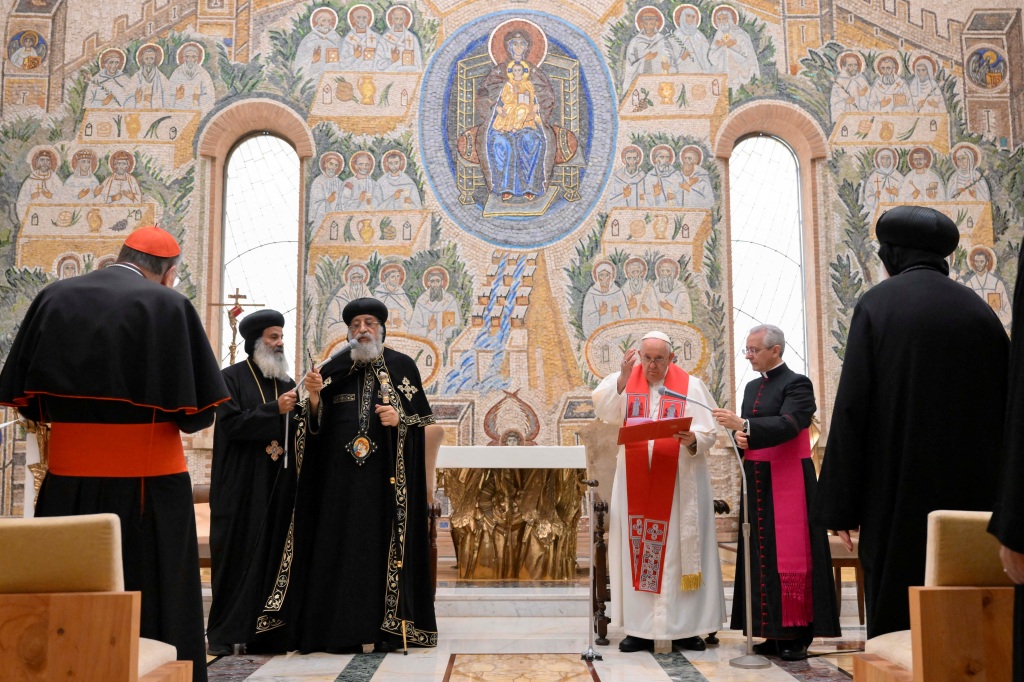
One of the most generous and helpful ecumenical stances the Roman Church has taken in the last few decades is giving the benefit of the doubt to other apostolic churches on their canonizations.
John Paul II had no problem referring to post-schism Russian saints like the great Seraphim of Sarov as “Saint.” And Pope Francis has named the Armenian Gregory of Narek – who lived over five centuries into the Oriental communion’s schism from the rest of the apostolic churches – a Doctor of the Church, and he likewise inscribed the new Coptic martyrs killed by ISIS into the Roman Martyrology.
This is both charitable and reasonable, but it is also helpful as a return to how the relationships between the major churches of the early first millennium ideally functioned: a relationship of mutual respect and deference between sister churches, where the important decisions of one in such matters were given the benefit of the doubt by the others.
This is the only true way toward a future reestablished communion between apostolic churches, and a tangible positive example of the Pope truly exercising his Petrine mission of facilitating a unity in love and spirit that respects diversity of rites, cultures, and historical complexities.
This is unrelated to the post here, but I haven’t seen you (or anyone else, for that matter) comment on this. The June Plenary meeting of Bishops at the USCCB just recently completed. Three voted were held relating to the Liturgy of the Hours 2nd Edition.
Please see https://www.usccb.org/news/2024/recap-us-bishops-spring-plenary-louisville
One vote was on “Supplementary Texts”, another was on “Additional Texts” and the last was on supplemental texts to the 2021 Missal.
What any of this portends for the Liturgy of the Hours, I don’t know and cannot parse.
Were these votes related to the 4,000 pages that the ICEL turned into the USCCB in May of 2023? Please see here: https://www.pillarcatholic.com/p/at-usccb-2026-is-the-new-2024
Is this the vote that Fr. Dought hoped would take place in June 2024 so that the LOTH 2nd Edition would be on course for a publication date in 2026?
Are these three votes important and meaningful in bringing us closer to the new LOTH and breviary?
Still absolute silence on the so-called Definitive Liturgical Bible, which is suppose to present an entirely new translation of the New Testament (as opposed to just the revision of the 1986 NT).
I might be wrong but by my understanding, this vote takes care of everything that needs to go to Rome for confirmatio in the LOTH 2.0. I know they decided not to wait for the entire new Bible project and only focus on the stuff that is reproduced in the divine office.
Do you know if a vote is planned for this Fall’s Plenary (in November, I presume) at the USCCB for those scripture passages that the LOTH 2.0 will use?
What I mean is scripture passages from the “Liturgical Bible” project, whatever state of completion it might be in come this November.
That is my understanding, yes